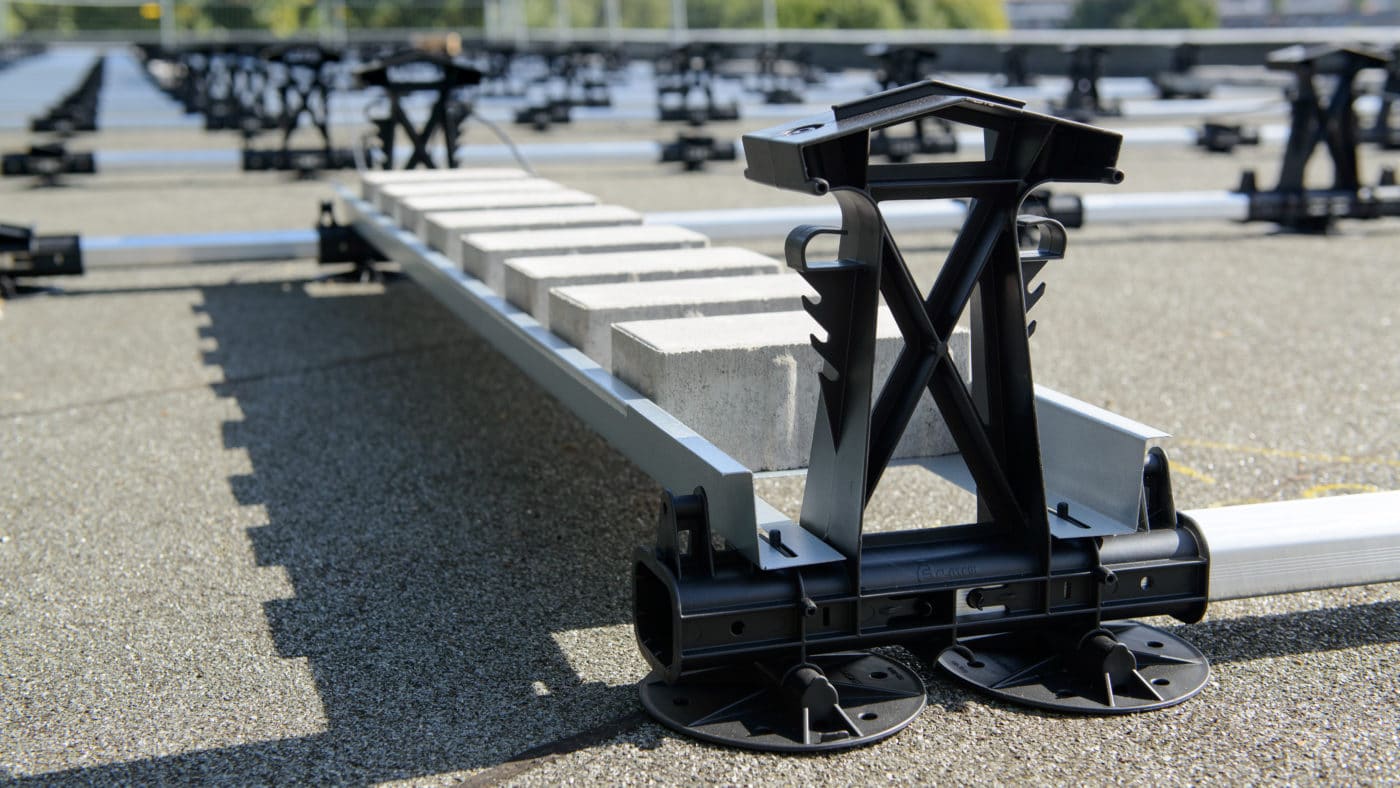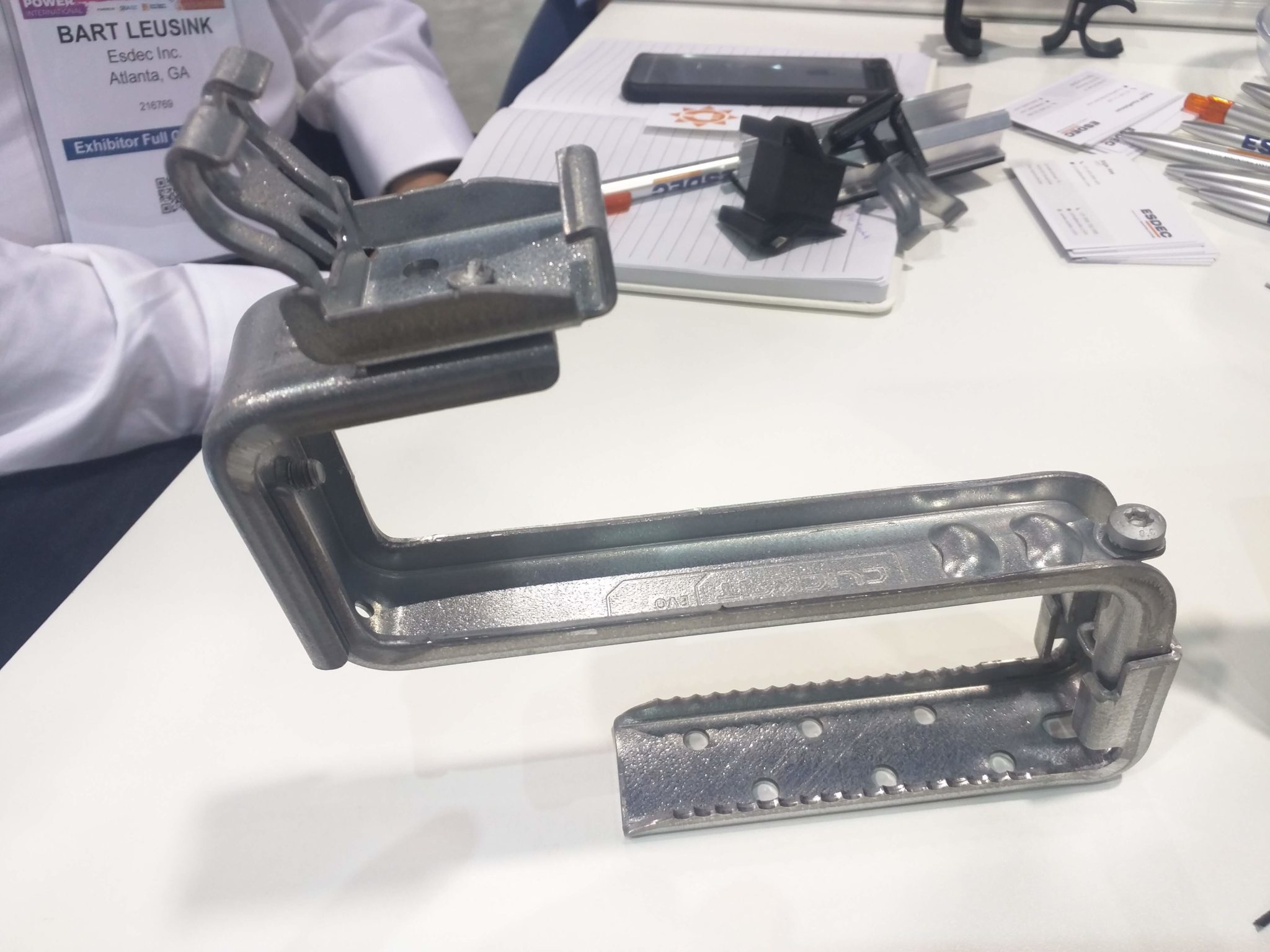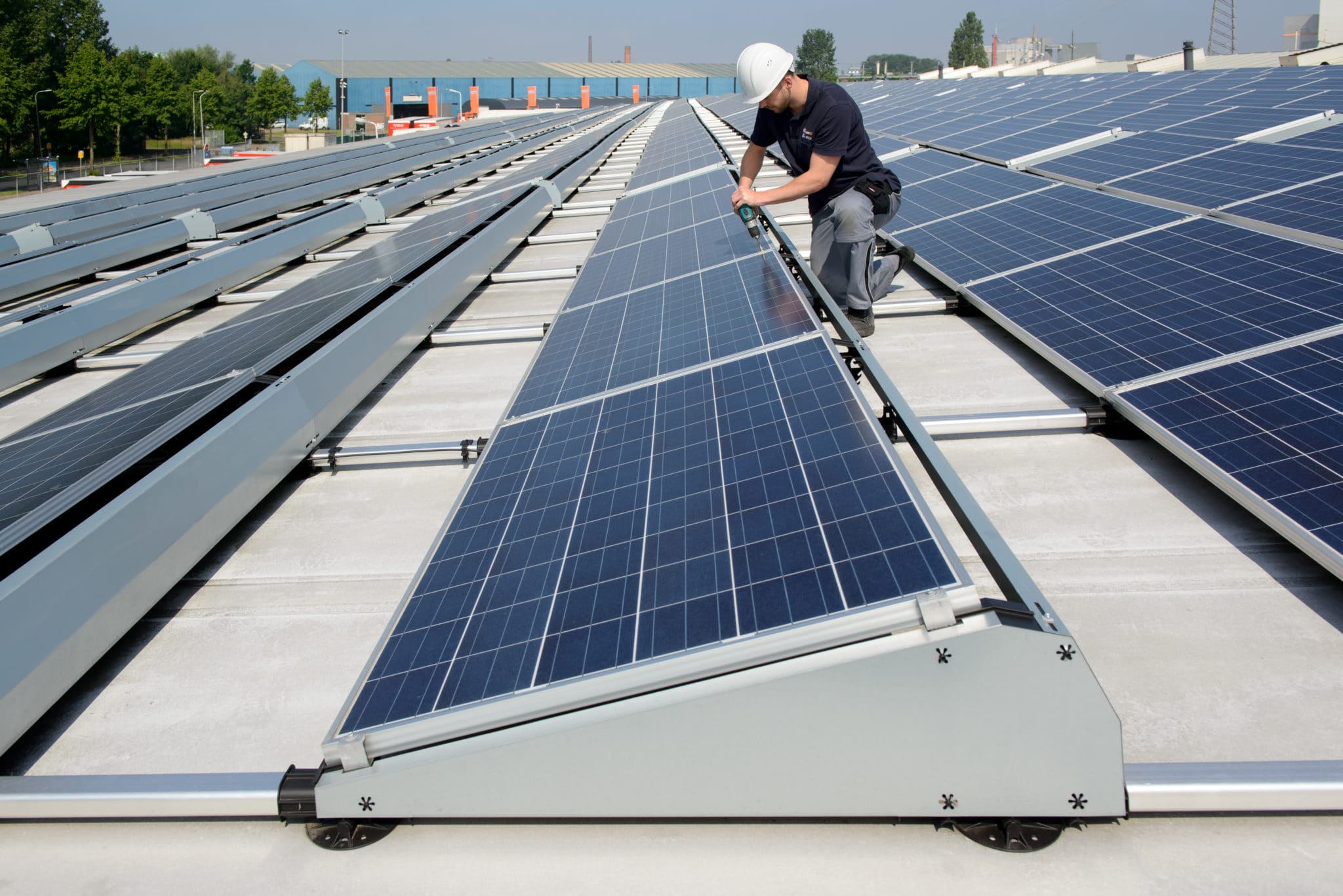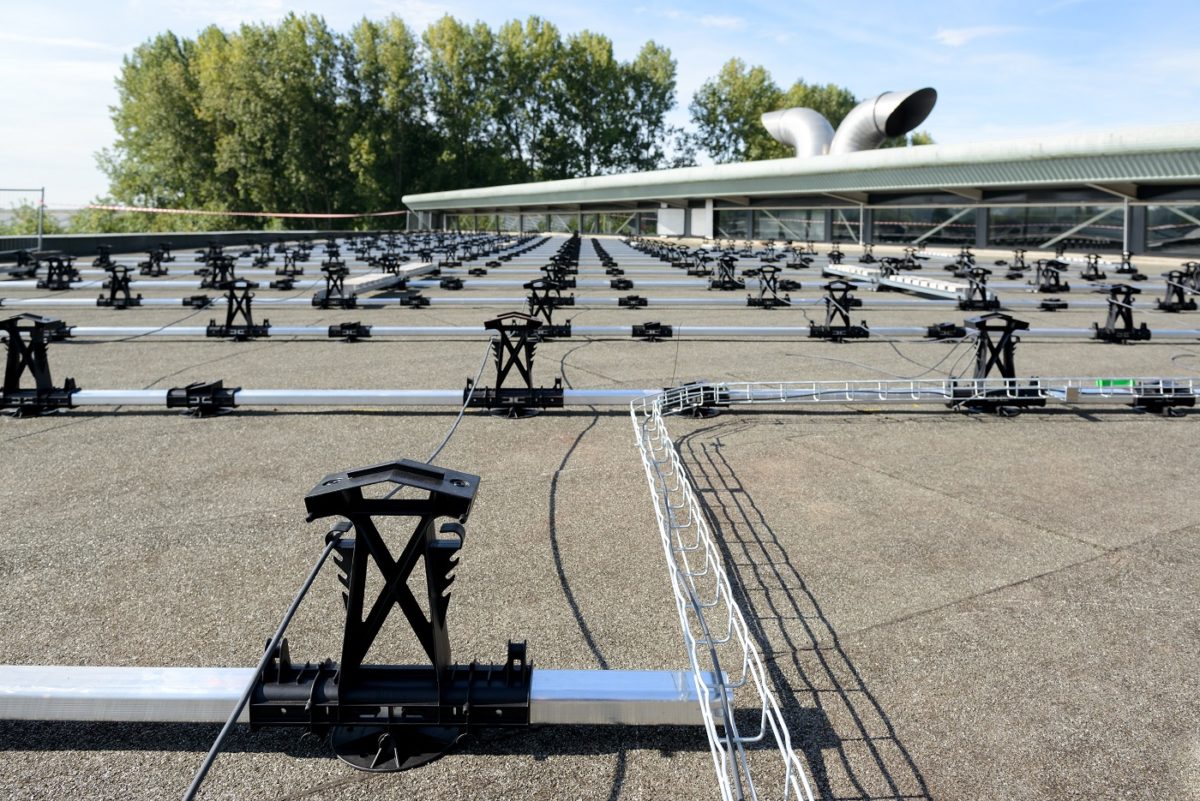As many stories of invention do, Esdec started with people looking to make their jobs a little easier. In 2004, early in the solar industry, two brothers from the Netherlands thought they could come up with a more refined solar racking system for their residential installations, and they had some success. Four years after that, they decided to try with commercial racking, and that worked out as well.
Now in 2018, with the brothers retired, the company has sold over 1.8 GW of product and is a market share leader in multiple European countries. I guess that means it’s time to cross the pond.
Esdec is launching its commercial flat roof product, FlatFix, into the United States. The product’s basic pitch is that it is easy and fast to assemble the four SKUs that mostly snap together by hand or use a 3/8″ drill. And in the below video, starting at 22 seconds and going for 1 minute 30 seconds, you can see that sales pitch snap together.
Company executives Stijn Vos and Bart Leusink talked with pv magazine at Solar Power International 2018 in Anaheim last week, and revealed a few of the details that give the FlatFix an edge.
One of the first things you notice is that the joints of the racking material are really light, seemingly made out of plastic. Except they’re actually 30% filled with glass and because of that they have a relative temperature index (RTI) rating of over 140 degrees. That means the hardware passes UL fire testing that ranges from -40°F to 122°F.
That’s the kind of hardware you get when one third of the company – in this case fifteen people – is in research and development.
The component above is the self-leveling baseplate, or a “floating foot” as it was described in the booth. Its ability to move allows the installation crew to get parts into place a bit easier, and as the roof shifts over time – instead of putting pressure on metal parts – the feet give a bit in both directions.

The system holds its ballast in a metal tray that has a bit of depth (see above image) meaning if your roof already has ballast on it you can use the product without adding too much extra weight to the structure. This fixed width might limit where you can source your stones, if your ballast is larger.
The company talked up their prototyping techniques, specifically noting that they used 3D printers as part of regular business. Their ability to build fast prototypes and get them into the hands of installers for testing meant that the company often found themselves upgrading components faster than they could get them tested.
The two wire management components below quickly snap into place on the rounded edges of the hollow “rails”, and the amount of strength needed to do so was limited. The tiny caps on the edges of the system easily connect to the wind guards.
The hardware can be installed in the traditional south-facing direction, or in a dual-tilt mode (east-west) with the same components, although you will use a great number of components as the east-west installation is more dense due to lower shadows.
Closer to the company’s roots is its residential rooftop hook (below) that easily slides underneath tiles. The company’s product is currently 40% sold into the residential market, and 60% sold into the commercial market.

While pricing wasn’t available at the booth, there was an assurance that the hardware was competitively priced, but that talking about just the price of the system missed the point. pv magazine was given the story of how the company used to send everyone on vacation at once back in the early days. This was done because the company was selling directly to installers and was designed by installers – all people who weren’t worried about the global corporate business cycle – but who instead were worried about installing as many solar panels as possible.
Esdec says 400 modules (130-160kW) can be placed by four installers in less than four hours, which translates to 8.5 to 10 kW per person per hour. Welcome to America.

This content is protected by copyright and may not be reused. If you want to cooperate with us and would like to reuse some of our content, please contact: editors@pv-magazine.com.











It looks like the mounting just rests on the roof with no penetrations – is that true?
Would be interested to see more of their residential stuff – I think I’ll have to look them up.